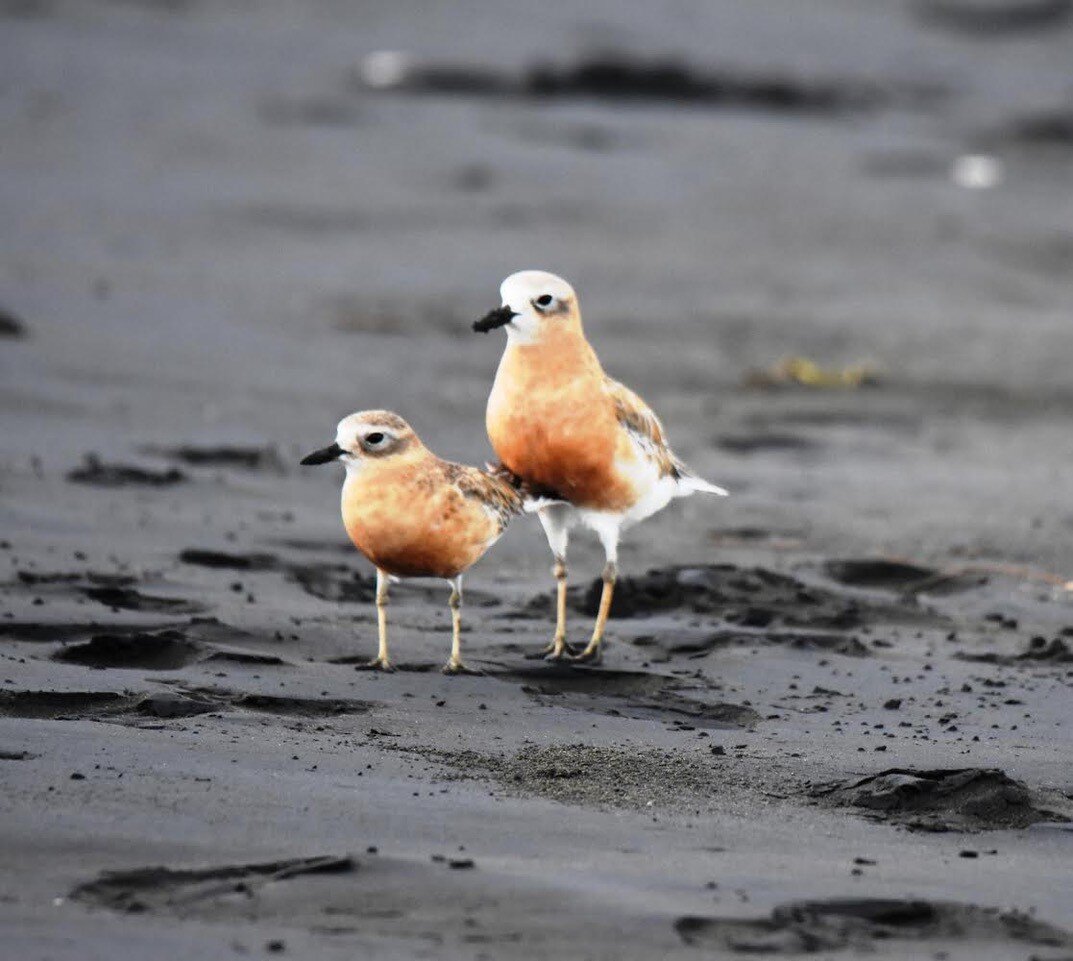Dotterels of Te Henga - Tūturiwhatu Pukunui
The New Zealand Dotterel is classified as endangered, with only 2075 birds counted in the most recent census. With local communities championing them and organising protection programmes, the population has stabilised. Since 2011, despite having at least one breeding pair on the beach each year, only three chicks have survived to fledge at Te Henga (one in 2019, and two in 2021). This more recent success is, we believe, due to the intensified community protection and awareness programme.
We currently have two breeding pairs of the northern New Zealand Dotterel at Te Henga (and possibly a third). Their nests are simple ‘scrapes’ in the sand, usually first seen in August-September, and three eggs are laid. If these eggs do not survive to hatching, or if the chicks do not survive, the pair may nest again up to three times in a season. The two chicks that survived to fledge this year were the result of a third attempt.
There are various strategies that are employed by our local team to help these vulnerable birds survive. First, there are traps throughout the dunes to try and reduce the predators such as rats, mustelids and hedgehogs, and locals are encouraged to keep their cats and dogs inside at night. Second, once the nesting area is identified, creating a fenced-off area on the beach discourages the public from encroaching on their territory and stepping on the nests. This fenced off area also gives the birds a safer area to feed; once hatched, the tiny chicks must find food for themselves – the parents do not feed them. Third, kelp is an important food source, and volunteers often collect any kelp to keep inside the fence. It’s vital that people do not take kelp from the beach for their gardens. Finally, an ongoing education effort is employed to remind dog owners to keep their dogs on a lead and well away from the dunes.
HOW CAN YOU HELP?
The NZ dotterel breeding season is from September to March. Here’s how you can help to protect NZ dotterel when you’re at the beach:
• Watch where you walk on the beach and try to keep below the high tide mark.
• Keep dogs on leashes and out of prohibited areas.
• Don’t take vehicles such as quad bikes or 4WDs onto beaches where dotterels are known to be nesting.
• Leave the immediate area if you see a dotterel that looks like it’s pretending to have a broken wing (as this is a sign a nest is nearby).
• Keep away from taped-off areas on beaches.
Photo Credit: Richard Gardner Photo Credit : Jeremy Painting









